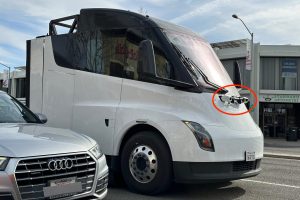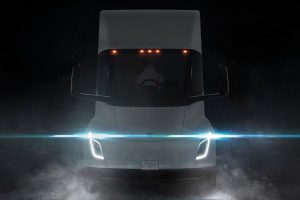- 🚗 Tesla and Uber have introduced a new incentive program offering up to $2,000 for Model 3 and Model Y purchases.
- 💸 Tesla provides $1,000 in credits, while Uber offers $1,000 in cash after completing 100 trips for eligible drivers.
- 🔋 Tesla Credits can be used for Supercharging, new vehicle purchases, or service appointments but cannot be redeemed for cash.
- 🤝 This is an extension of previous collaborations between Tesla and Uber on promoting electric vehicles for ride-sharing.
- 🌍 The partnership aims to increase the adoption of electric vehicles among ride-share drivers, enhancing both companies’ sustainability goals.
In the quest for a more sustainable future, Tesla and Uber have joined forces in an innovative initiative that not only promotes greener transportation but also significantly benefits ride-share drivers. The announcement of their new incentive program, which offers up to $2,000 for the purchase of Tesla’s Model 3 and Model Y, marks a crucial step towards widespread electric vehicle adoption in the ride-sharing industry.
Unveiling the Incentive Program
The incentive program launched by Tesla and Uber is a groundbreaking initiative designed to encourage ride-share drivers to switch to electric vehicles. Here’s how it works:
- $2,000 Incentive: This program offers a total of $2,000 through combined incentives from both Tesla and Uber.
- Tesla’s Contribution: Upon purchasing a new Model 3 or Model Y, eligible drivers receive $1,000 in Tesla Credits. These credits can be used for a range of Tesla services, including Supercharging, vehicle upgrades, and service appointments. However, they are not redeemable for cash.
- Uber’s Pledge: Once drivers complete 100 rides, Uber provides an additional $1,000 in cash, offering a direct financial benefit for those who actively participate in the ride-sharing economy.
Historical Context: A Continuation of Collaboration
This initiative builds on past collaborations between Tesla and Uber, both of which have set a precedent for promoting electric vehicles within the ride-sharing domain. Previously, Uber has worked with Tesla to introduce similar incentives, reflecting a shared commitment to reducing the industry’s carbon footprint.
The Impact of Electric Vehicles on Ride-Sharing
The integration of electric vehicles into ride-sharing platforms offers several key benefits:
- Environmental Sustainability: By reducing reliance on fossil fuels, electric vehicles help decrease air pollution and greenhouse gas emissions.
- Cost Efficiency: Electric vehicles often have lower operating costs, including fuel and maintenance, compared to traditional vehicles. This can translate into higher earnings for drivers.
- Enhanced Experience: Tesla’s Model 3 and Model Y are equipped with advanced features that can enhance the ride-sharing experience for both drivers and passengers.
Potential Challenges and Considerations
While the program presents promising opportunities, there are important factors and potential challenges to consider:
- Initial Investment: The cost of purchasing a Tesla vehicle remains a significant barrier for some drivers, even with the incentives.
- Infrastructure and Accessibility: Access to charging infrastructure can vary by region, posing challenges for some drivers in areas with limited Supercharger availability.
- Incentive Limitations: Tesla Credits, despite their flexibility, cannot be used for all purchases or redeemed for cash, requiring strategic management by drivers to maximize their value.
Looking Ahead: The Future of Sustainable Ride-Sharing
This initiative by Tesla and Uber is more than just a financial incentive; it’s a step towards a sustainable ride-sharing ecosystem. By driving the adoption of electric vehicles, both companies are paving the way for cleaner urban environments and more sustainable transportation.
Conclusion
In conclusion, Tesla and Uber’s incentive program represents a significant opportunity for ride-share drivers to join the electric vehicle revolution. By embracing this initiative, drivers have the potential to lower their environmental impact, reduce operating costs, and deliver a superior ride-sharing experience. It is not just a smart move for drivers—it’s an essential step towards a more sustainable future.





